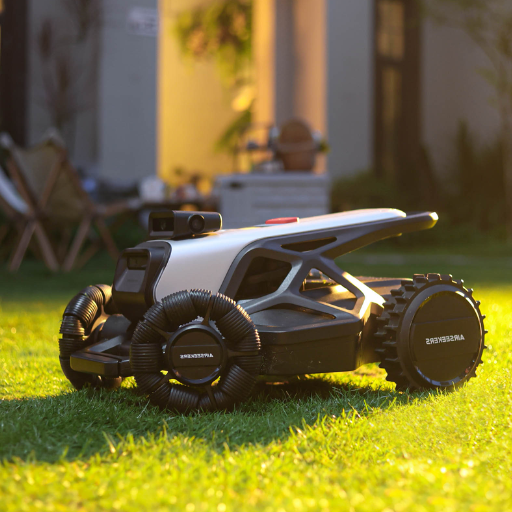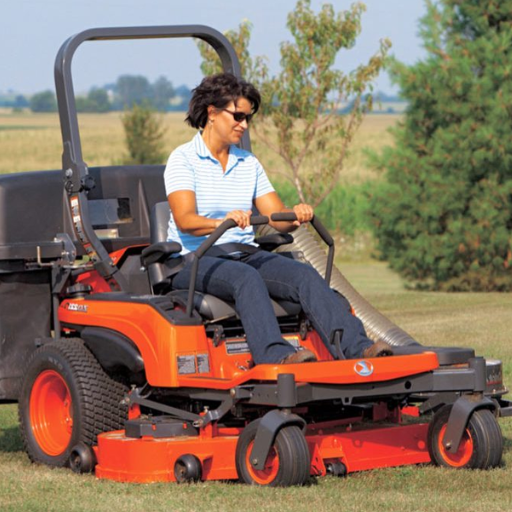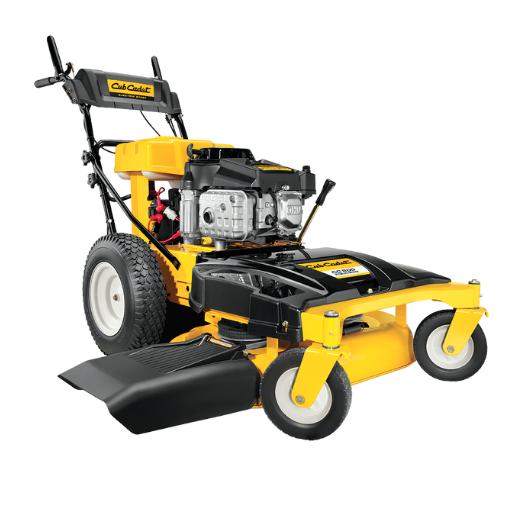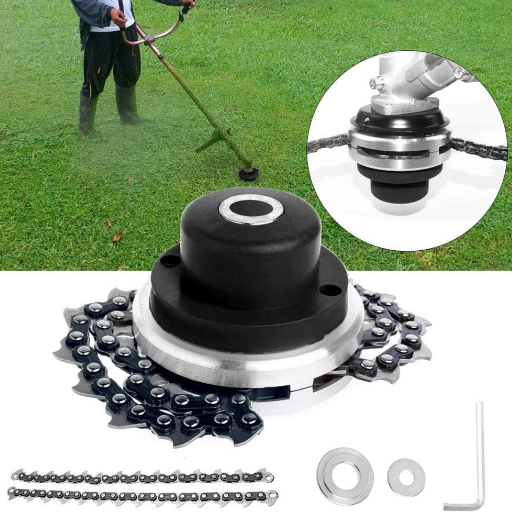Maintaining a neat yard is never easy, and dealing with small trees and dense growth can present quite a challenge without the right tools. Enter the brush cutter, your ultimate ally for tackling overgrowth that regular weed trimmers simply can’t handle. This comprehensive guide will help you identify the perfect brush cutter for your specific needs, covering essential features, top-rated models, and expert tips for making a lasting investment.
Understanding Brush Cutters

What is a Brush Cutter?
Brush cutters are heavy-duty machines designed to clear thick brush, cut dense grass, and fell small trees. Unlike standard lawn mowers or string trimmers, these versatile tools can handle aggressive landscaping tasks with their powerful engines and interchangeable cutting attachments.
Key Applications:
- Clearing thick grasses and overgrown weeds
- Managing dense underbrush
- Cutting small trees and saplings
- Maintaining trails and hard-to-reach areas
- Restoring neglected patches of land
How Brush Cutters Work
Brush cutters utilize a gear-box arrangement that connects a powerful engine to a rotating cutting head equipped with tough blades or trimmer lines. The engine transmits torque to the cutting mechanism, which rotates at high speed to slice through dense vegetation and small saplings.
| Engine Type | Advantages | Best For |
|---|---|---|
| Two-Stroke | Lightweight, high power-to-weight ratio, simple design | Professional use, heavy-duty tasks |
| Four-Stroke | Fuel efficient, environmentally friendly, quieter operation | Residential use, extended operation periods |
| Electric/Battery | Quiet operation, zero emissions, low maintenance | Light-duty tasks, noise-sensitive areas |
Key Features to Look For

Power and Motor Type
The motor type is your primary consideration when selecting a brush cutter:
- Gas-Powered: Ideal for heavy-duty applications and extended use
- Electric/Battery: Perfect for quieter, eco-friendly operation and lighter tasks
Blade Functionality
Look for brush cutters with interchangeable blades and cutting attachments. Multi-purpose machines can handle everything from tall grass to thick branches, providing maximum versatility.
Ergonomics
Comfort is crucial for extended use. Essential ergonomic features include:
- Adjustable handlebars
- Quality harnesses
- Anti-vibration characteristics
- Lightweight design
Build Quality
Invest in models with stainless steel blades and sturdy housings for durability and reliable performance in tough environments.
Cutting Width and Efficiency
Consider the cutting swath to ensure efficient coverage. Larger cutting widths mean faster completion of large-area tasks.
Top-Rated Brush Cutters for Small Trees

1. Husqvarna 336FR
Best Overall Choice
- Powerful X-Torq engine with lower emissions and increased fuel efficiency
- Adjustable ergonomic handle for operator comfort
- Anti-vibration system reduces fatigue
- Compatible with trimmer, grass blade, and saw blade attachments
- Suitable for both homeowners and professionals
2. Makita EM2652LHN
Best for Easy Maintenance
- 4-stroke engine using straight gasoline (no mixing required)
- Lightweight construction with loop handle
- Exceptional durability and reliability
- Easy maintenance without fuel mixing
3. Stihl FS 131
Best for Heavy-Duty Work
- Anti-vibration technology
- Easy-start system
- Shoulder strap and bicycle handle for extended use
- Robust construction for demanding applications
4. Echo SRM-2620T
Best for Professional Use
- High-thrust gearbox for power and precision
- Ergonomic design for comfort
- Speed-Feed 400 trimmer head for quick line replacement
- Reliable performance favored by landscaping professionals
5. Greenworks Pro ST80L210
Best Eco-Friendly Option
- 80V lithium-ion battery system
- Silent operation with zero emissions
- Multi-tool attachment system
- Lightweight design for easy handling
- Perfect for environmentally conscious users
Stihl Brush Cutters: Pros and Cons

✅ Pros
- Powerful and Efficient: Handle tough vegetation and small trees with ease
- Well-Built: High-quality materials withstand heavy-duty work
- Wide Range: Models available from light homeowner use to professional applications
- Easy to Use: Ergonomic designs with anti-vibration features
- Support: Extensive attachments and excellent customer service
❌ Cons
- Higher Price: Premium pricing compared to competitors
- Maintenance Costs: Authentic Stihl parts can be expensive
- Weight: Some models heavier than competitor alternatives
Feature and Price Comparison
| Model | Engine Type | Key Features | Price Range |
|---|---|---|---|
| Honda UMK435T | 4-Stroke | Quiet operation, low emissions, eco-friendly | $450 – $550 |
| Stihl FS 91 R | 2-Stroke | Reduced noise and vibration, comfortable for extended use | $400 – $500 |
| Husqvarna 128LD | 2-Stroke | Smart start system, detachable shaft, budget-friendly | $200 – $250 |
Maintenance Tips for Brush Cutters
Essential Maintenance Tasks
- Clean the Air Filter Regularly
- Check every 25 hours of use
- Clean more frequently in dusty conditions
- Replace when necessary for optimal engine efficiency
- Keep Blades Sharp
- Check for blade wear every 10-15 hours of cutting
- Sharpen or replace dull blades immediately
- Sharp blades reduce engine strain and improve cutting efficiency
- Inspect and Change Spark Plugs
- Check after 30 operating hours
- Replace annually or when damaged
- Use manufacturer-recommended spark plugs
- Maintain the Fuel System
- Use clean, fresh fuel
- Clean fuel lines, filter, and carburetor regularly
- Properly mix fuel for 2-stroke engines
- Lubricate Moving Parts
- Regular lubrication prevents wear and friction
- Focus on gearbox, throttle, and moving components
- Use manufacturer-recommended lubricants
Storage Tips
- Clean thoroughly after each use
- Remove dirt, grass, and sap from blades
- Ensure unit is completely dry before storage
- Empty fuel tank for long-term storage
- Store in cool, dry place away from direct sunlight
Choosing the Right Brush Cutter for Your Needs
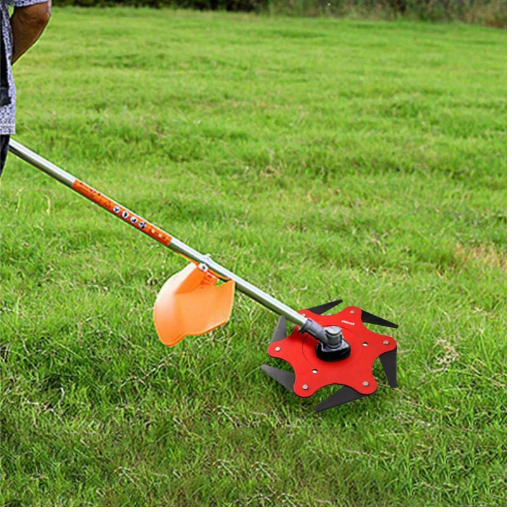
Consider Your Terrain
- Flat, Open Areas: Standard brush cutters work well
- Hilly or Uneven Terrain: Choose models with excellent traction and stability
- Dense Undergrowth: Opt for heavy-duty gas-powered models
- Soft or Muddy Ground: Select lightweight, durable equipment
Power Requirements
- Small Gardens/Light Trimming: Electric or battery-powered options
- Large Properties/Heavy Vegetation: Gas-powered brush cutters
- Professional Use: High-horsepower gas engines
References
-
University of California Agriculture and Natural Resources – Cutting: String Trimmers / Brush Cutters: Provides insights into the effective use of brush cutters for managing vegetation, including small trees.
-
Croatian Journal of Forest Engineering – Influence of Cutting Attachment on Noise Level Emitted by Brush Cutter: Examines the impact of cutting attachments on brush cutters, particularly in forest management and young tree tending.
-
Michigan Sportsman Forum – Best Tool for the Job: Removing Small Trees and Shrubs: Discusses practical experiences and recommendations for tools, including brush cutters, for clearing small trees and shrubs.
Frequently Asked Questions (FAQ)
Which brush cutting tool should I use for small trees?
Typically, a brush cutter with sufficient load-carrying capacities will cut woody stems and saplings up to 2 inches in diameter. Try to get a brush cutter with a powerful engine having 50cc or higher so it can run swiftly over the tough vegetation. Those with brush blade attachments will reduce your brush-cutting time and help greatly with thick overgrowth.
In what ways do brush cutter attachments enhance performance?
Well, a brush cutter attachment boosts the performance of your power tool by letting you efficiently do various cutting tasks. The brush cutter attachments are meant for cutting dense brush and small trees, thus adding versatility to lawn care and forestry types of work. Calling for larger trees and woody vegetation that cannot be handled with a normal weed eater or trimmer, these brushes would handle them with ease.
What are the features to consider in a good brushcutter?
Features to look into when buying a good brushcutter would include power, the kind of blades, and safety features like blade guards. It is a good brushcutter if it has carbide blades, giving you the best quality and longest life. Also, check out customer ratings and reviews to avoid ending up with a dud. Choose a model that is intended for cutting different kinds of brush and also can be used for different tasks, even if limited use.
Can I use a brush hog to cut small trees?
A brush hog relates more to clearing large or small areas of dense brush and grass and can cut well into thin trunks of small trees. However, for saplings, brush cutters offer superior precision and control. For clearing larger tracts of land, brush hogs work rather well, thereby making them unsuitable for fine trims.
Are cordless brush-cutters strong enough for small trees?
A cordless brush cutter can be strong enough in the small tree and brush cutting business, provided they’re built with well-placed batteries and powerful motors. Lots of new implements are now fitted with newer technology that allows them to compete with gas-powered ones. So look for brands with high-voltage batteries capable of doing the cutting and without a cord in sight!
How do I keep my brush cutter in the best working order?
For maximum performance, from time to time, sharpen the blades of your brush cutter. Keep the engine clean and well lubricated. Check the condition of the fuel system and fix leaks if they appear. It is also useful to follow the manufacturer’s quality control instructions, such as the periodic replacement of air filters and spark plugs.
What is the difference between a brush cutter and a weed eater?
The primary difference between a brush cutter and a weed wacker is in their design and what they are intended to be used for. Brush cutters are heavy-duty power tools meant to cut through dense brush, saplings, and small trees, whereas weed wackers are better for grass and light vegetation trimming. Brush cutters are also the ones destined to have distinct attachments for cutting through tougher materials. Hence, they would be great for landscaping bigger properties or managing overgrown areas.
Can a brush cutter handle buckthorn and other invasive species?
Yes, a brush cutter can cut through buckthorn and other invasive species. These machines are made to cut through tough, woody stems, thereby making them suitable to curtail those invasive plants that threaten local ecosystems. Regular application of brush cutters hence can control and reduce those species primarily within areas of approximately 10 acres.
What safety features should I look into when buying a brushcutter?
When selecting a brushcutter, look for safety features such as a blade guard to prevent injuries from kickbacks and flying debris. It would also be wise to find one with ergonomic handles for comfort and control during operation. Consider models with automatic shut-off features and vibration-dampening systems that will further guarantee your safety while using your brush cutter.




